
Associate Professor Luca Fiorenza
Head of the Palaeodiet Research
Luca is the Head of the Palaeodiet Research Lab and his research focuses on functional morphology of the masticatory apparatus in human and non-human primates, and on the importance of the role of diet in human evolution. He has published peer-reviewed articles in top tier multidisciplinary science journals such as Nature (Senior Author), Nature, Ecology & Evolution and Current Biology, as well as high-impact anthropological journals such as Journal of Human Evolution and the American Journal of Physical Anthropology. He has been listed among the Australia’s Top Researchers in 2025 and in 2020 by The Australian’s Research Magazine as Leader in the field of Anthropology. He has attracted competitive internal and external research funding totalling more than $3M AUD, including four ARC-Discovery Projects. He has wide experience in running research-intensive training workshops in cranio-dental functional morphology, digital anatomy and biomechanics.
Email: luca.fiorenza@monash.edu
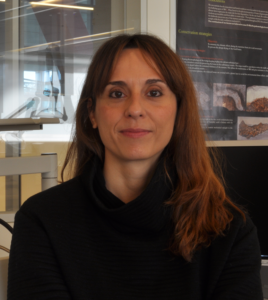
Dr Laura Martín-Francés
Marie Sklodowska-Curie postdoctoral fellow
Laura is a Marie Sklodowska-Curie postdoctoral fellow at CENIEH (Spain) and Monash University (Australia). Her research focuses in the pattern of settlement of hominin groups during the Early and Middle Pleistocene in Europe, with special interest in the western part. She applies morphometric techniques to the outer and inner dental tissues to investigate the appearance and evolution of the Neanderthal traits. Currently, Laura is at PalaeoDiet Lab (Monash University) conducting her EU-MSCA project BITE. The aim of this project is to evaluate how morphometric dental traits evolved to adapt to diet or cultural habits as well as the pace of these changes in phylogenetically related, and chronologically consecutive European groups. She will investigate complementary dental proxies (dental wear, morphology, and enamel thickness) to assess if the cranio-dental morphology of European groups truly correlate with biomechanical stress.
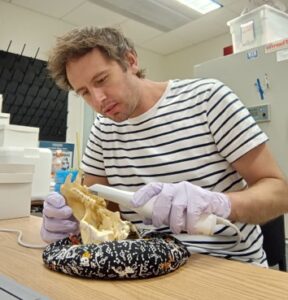
Dr Ian Towle
Postdoctoral researcher
Ian is a postdoctoral researcher in the Australian Research Council-funded project (DP240101081) titled “From Foraging to Farming: Human Adaptations in the Mediterranean Region during the Neolithic Revolution”. This project explores the impacts of the transition from a nomadic lifestyle of hunting and gathering to a sedentary agricultural existence on human anatomy, physiology, and health. Focusing on dental samples, Ian investigates critical life events and stressors through sectioning teeth. More broadly, Ian’s research has examined dental pathologies and wear across various primate and hominin samples, as well as the mechanical and structural properties of teeth. His work employs a variety of techniques, including Micro-CT scanning, nanoindentation, SEM analysis, and photogrammetry. Ian completed his PhD at Liverpool John Moores University in 2017, and a postdoctoral research position at the University of Otago in 2021.
Email: ian.towle@monash.edu

Dr Yeonuk Kim
Research Officer
Dr Yeonuk Kim is a Mechanical Engineer with a PhD from Monash University. His research focuses on the characterisation and modification of soft materials, with particular interest in their mechanical and chemical characteristics under various conditions. He has extensive experience in advanced 3D modelling, simulation, and computational analysis, with applications in both biomedical engineering and cultural heritage preservation. Dr Kim has expertise in Finite Element Analysis, mechanical testing, and 3D modelling, and is proficient in engineering software including ANSYS and SolidWorks. Dr Kim currently serves as a Research Officer in the Paleodiet Research Lab, where he contributes to a range of projects involving mechanical testing, material analysis, and Finite Element Modelling of anthropological specimens.
Email: yeonuk.kim@monash.edu
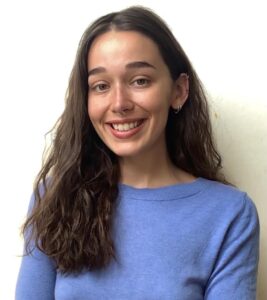
Madeline Sañudo
PhD Candidate
Madeline is currently undertaking a PhD in Biological Anthropology under the Biomedicine Discovery Scholarship, an international scholarship to recognise the excellence of Monash students from the Faculty of Medicine, Nursing and Health Sciences. The aim of her work is to generate knowledge about the health, diet, and lifestyle of populations who lived during important times of transformation, such as the transition from hunting and gathering to agriculture. These insights will be gleaned by analysing macro and micro trace wear facets found on the occlusal surfaces of dental remains. In her research she combines two well established digital methods; Occlusal Fingerprint Analysis and 3D Surface Texture Analysis. This investigation will be carried out on samples from archaeological sites found both in Italy and Croatia, spanning from the Upper Paleolithic to the Medieval era. This research is part of the Australian Research Council-funded project (DP240101081) titled “From Foraging to Farming: Human Adaptations in the Mediterranean Region during the Neolithic Revolution”.
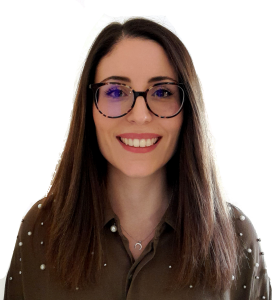
María Hernaiz García
PhD Candidate
María is currently doing her PhD on cranio-dental anatomy of Neanderthals and anatomically modern humans under the Biomedicine Discovery Scholarship, an international scholarship to recognise the excellence of Monash students from the Faculty of Medicine, Nursing and Health Sciences. The aim of her work is to examine the masticatory system of Neanderthals from a functional and biomechanical point of view. By carrying out 3D modelling of bones and teeth from a wide Neanderthal fossil sample and by virtually reconstruct the simulation of their chewing behaviour, she will be able to assess if Neanderthal cranio-dental morphology was truly adapted to resist powerful bite forces. This study is part of the “A real-time biomechanical study of Neanderthal anterior dentition” project (DP190100465) funded by the Australian Research Council (ARC).
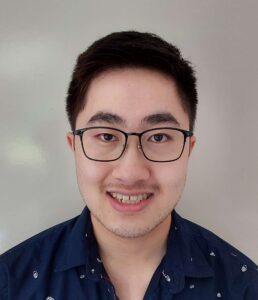
Richard Lee
Honours Student
Richard’s honours research project investigates the relationship between tooth wear on modern human teeth and chewing efficiency over multiple time points. The project will use dental cast recordings of Aboriginal Australian children from the Yuendumu Reserve (Northern Territory), who were in a transitional period from their hunter-gatherer lifestyle to a more settled lifestyle. Richard will use Occlusal Fingerprint Analysis to examine the occlusal wear and conduct mechanical testings with 3D printed teeth and gelatin blocks, which will provide better insight into the functionality of tooth wear and its effects on mastication.
Email: rlee0056@student.monash.edu

Dr Ali Najafzadeh
Adjunct Research Associate
Ali is a Mechanical Engineer who received his Master’s degree from the University Tenaga National (UTN) in 2013 in Kuala Lumpur, Malaysia. Currently, he is a 3rd year PhD student at the Mechanical and Aerospace Engineering department at Monash University in Melbourne, Australia. His research expertise is in bio-mechanics focusing on bone fracture healing monitoring and assessment as well as orthopaedic implants design and analysis by the means of Finite Element Analysis (FEA) method. Ali is also helping with the ARC Project “A real-time biomechanical study of Neanderthal anterior dentition” (DP190100465). His contribution to this project is in understanding the evolution of the human dentition evolution by conducting engineering simulations using FEA.
Email: Ali.najafzadeh1@monash.edu

Palaeodiet Research Lab Alumni
Teagan Harty
Honours Student
Teagan’s honours research project involved investigating the relationship between craniodental morphology, primate diet and their ecology. Particularly, understanding the difference between the Mountain gorilla (Gorilla beringei beringei) and the lowland gorilla (Gorilla beringei graueri and Gorilla gorilla gorilla) subspecies and how their different ecology affects their tooth morphology. Teagan used Occlusal Fingerprint Analysis (OFA) to analyse molar macrowear; the well defined enamel polished wear facets caused by occlusal contact during the masticatory cycle. Her study will provide comparative data to reconstruct the diet of our early human ancestors.

Jinyoung Lee
Honours Student
Jinyoung’s honours research project examined how wear facets form and develop through time in Australian Aboriginal children from Yuendumu (Northern Territory) using the Occlusal Fingerprint Analysis method. Jinyoung used a series of dental stone casts collected between 1950’s and 1970’s that were part of a large longitudinal project concerned with the dentition and general growth of Australian aboriginal children. The Aboriginal people from the Yuendumu Reserve were at an early stage of transition from a nomadic and hunter-gatherer way of life to living on a settlement, and thus, they offered a unique opportunity to better understand the relationship between diet, environment, cultural habits and tooth wear.

Sarah Fung
Honours Student
Sarah’s project focused on functional and morphological analysis of the Carabelli trait (an additional cusp or tubercle that form on the mesio-lingual surface of permanent and deciduous maxillary molars) through Occlusal Fingerprint Analysis (OFA). Sarah used dental casts of Australian Aboriginal children belonging to the Yuendumu tribe, a population that lived in transition from a hunter-gatherer to modern lifestyle.

Dr Yu Gu
Research Visitor
Dr Yu Gu (D.D.S, M.S.D, Ph. D) is an associate professor at Shandong University (China), specialised in dental anthropology and Endodontics. Dr Gu visited the Palaeodiet Research Lab in 2024 to learn about tooth wear analysis methods to reconstruct the diet of prehistoric human populations from the Shandong region that occupied this area during different periods of time, ranging from the Neolithic (4th to 3rd millennium) to the Bronze and Iron Ages. His project, funded by China Scholarship Council, focused on how environmental changes have shaped the living conditions and physiological characteristics of these human populations.
Email: guyu@sdu.edu.cn
